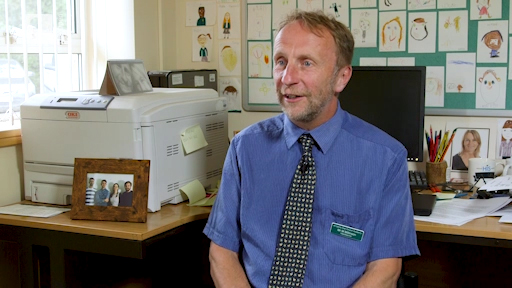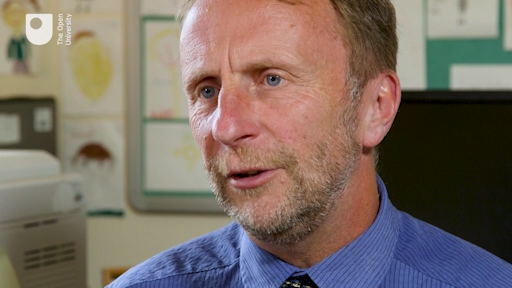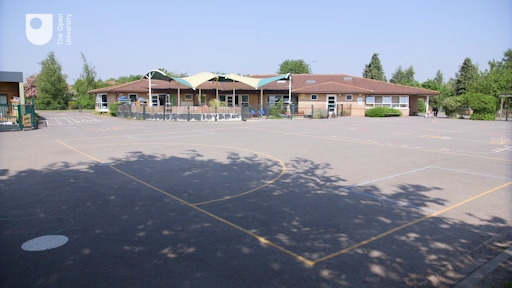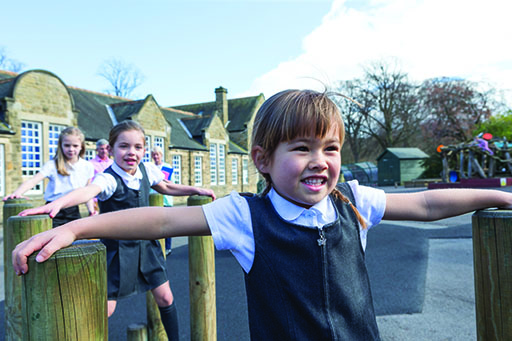1 The importance of the playground
Not every child has access to a private garden, a park or an area of woodland. But almost every child has access to school grounds. There’s something significant about the daily experience of an outdoor space, experiencing it in all weathers and throughout the seasons.
If you ask children which part of the school day they enjoy the most, many will say ‘playtime’. Nowadays, adults are much more aware of the importance of playtime for children’s physical and social development and their well-being. Adults who are playtime supervisors in primary schools will confirm that the playground can be educational and directly supportive of classroom learning.
There are two places in primary schools where children can talk whenever they like and about whatever they like – one is the dinner hall (although adults often control the volume of talk) and the second is the playground.
Clearly, playgrounds and classrooms are very different kinds of designed spaces. To a large extent, children decide what happens in a playground; whereas, in the main, adults decide what happens in a classroom. Playgrounds provide children with opportunities for activity and spontaneous bodily movement that would be problematic in a classroom. If you want to have a sense of how children truly are when they are free, you should observe them at playtime.
In Session 1, you looked at two transcripts of children’s talk, and you explored what this talk revealed about them. It is important to remember that non-verbal communication and ‘body language’ can be observed too. Body language includes facial expressions, particularly the use of eyes, hand and arm gestures, body posture, movements, as well as the clothes we wear and even the colours we choose. Even children at the earliest stages of language learning use their hands when they speak, especially if their parents do. Gestures often mirror speech.
Next, you’ll hear from headteacher Mark Millinson again, about his perspectives on the playground and what happens there.
Activity 1 A head teacher talks about the playground
Adults who work and volunteer in primary schools often find themselves in the playground during breaktimes or lunchtimes. It’s a great opportunity to observe children moving freely, talking, singing, playing games, or simply sitting and watching. Adults often use this time to observe children’s friendship groups and how children get along with each other. Headteacher Mark Millinson says the playground is part of the school day.

Transcript: Video 1
Mark says it’s fun to be in the playground, because sometimes children ask him and other teacher to play with them. Later, you’ll hear two children confirm this.
But what about problems and conflicts that arise in the playground? Mark explains his school’s way of dealing with these, and why adults in the school need to help children resolve disagreements at playtime.

Transcript: Video 2
In the next activity, you’ll observe a primary school playground and children’s use of the spaces in it.
Activity 2 Observing a playground
Watch this video of a primary school playground. This playground has two parts: a tarmac area, and a field area.
As you watch, scan the two playground spaces. Notice their physical and environmental characteristics. Look at how children are moving and gesturing, on their own and in relation to each other.
From what you can see in the sequences, sketch a rough plan of these areas. Include any distinctive playground markings, surface areas, objects or boundaries.
As you watch, also listen for the sounds of these playground spaces. What do you hear? Jot these down as well. Notice what the adults are doing in the playground too.
You can watch the sequence a few times and pause the video in order to record the details.

Transcript: Video 3
[NO SPEECH]
[MUFFLED CHILDREN'S VOICES]
[BIRDSONG]
[LOUDER CHILDREN'S VOICES]
[CLAPPING]
[LOUD CHILDREN'S VOICES
IN PLAY]
[INTERPOSING CHILDREN'S VOICES]
[CHILDREN SINGING]
Discussion
The seemingly disorganised sounds that arise from playgrounds are not unlike the cacophony of sound that can be heard on a crowded beach. The detail of what is being said, and the reasons for individual interactions, will change over the years but the ‘chorus’ of combined and disparate sounds is timeless.
The children in the video that you watched seem to use all of the available space in the two play areas, tarmac and field. They have freedom and space to run and climb, and play team games. There are also quiet spaces, and a semi-wild woodland area. In the video sequence, you can hear a child ask ‘Can I play?’ and later you can hear children singing. The adults are circulating and watching, not participating in children’s activities but ready to step in if necessary.
One benefit of playtime is that children of different ages can mix, and you may have noticed children playing a game at a table with older boys from a local secondary school who are acting as playground helpers.
Later in this session you will use some criteria to evaluate the playground spaces.
Next, you will listen to two children talk about the school playground that you have just seen.

